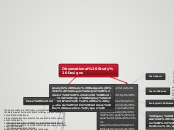Observational Study Designs
Descriptive Study Designs
Describes the events. Answers the what, who, where. Generates the hypothesis
Case-Report
Description:
Detail
Generates Hypothesis
Single Cases
New findings/unique
Advantages:
- Find new diseases
- ID rare manifestations
-
Disadvantages:
- No generalization
- No cause/effect relationship
Case Series
Description:
Subjects common characteristics
Describes some aspect of disease treatment,
exposure, or diagnostic procedure
Advantages:
- Informative
- Characterize averages for disorder
Disadvantages:
- No cause/effect relationship
- Doesn't assess disease frequency
Ecological Studies
Description:
Data analyzed at the population or
group level rather than individuals.
Advantages:
- Easier
- Hypothesis is new
Disadvantages:
- Ecological fallacy-placing characteristics
of a group to every individual in that group
Cross-Sectional
Description:
- exposure & disease measured at the same time
- assesses prevalence of the outcome
Advantages:
- study nonfatal & chronic conditions
- measures
Disadvantages:
- relationship b/w exposure and disease may be difficult to establish
- Does not reflect a casual relationship
Analytic Study Designs
Test the hypothesis.
Address the causation.
Case Control
Description:
-study that studies cases to controls
-Controls must be similar to the cases
-Known as retrospective study
Advantages:
- Good for studying rare conditions
- Look at multiple risk factors
- Establish relationship
Disadvantages:
- Low data quality
- difficult finding control group
Cohort
Description:
-population exposure status is known from the start
- start with disease free people
- addresses disease at the follow up
- 3 cate: prospectively, retrospectively, ambidirectional
Advantages:
- find out incidence and rate
- establish cause and effect
- minimize selection and bias
Disadvantages:
- losses to follow up
- requires large samples
- expensive
- long time to complete
Case Cohort
Description:
- cases are selected by those who have developed the disease of interest and before the controls
Advantages:
- possible to study multiple diseases
Disadvantages:
- complicated statistical analysis
Nested Case Control
Description:
the controls are sample of individuals who are at risk for the disease at each of the cases are matched with controls that do not have the disease
Advantages:
- Less expensive
- Efficient
Disadvantages:
- Reduce precision due to sampling of controls
